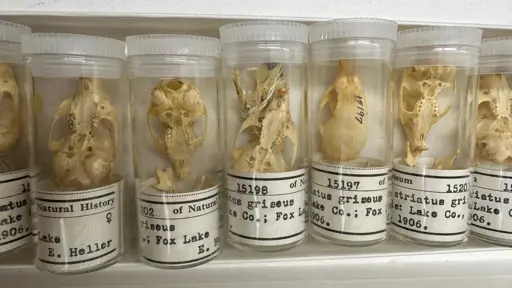The researchers found that the changes in climate didn’t explain the changes in the rodents’ skulls, but the degree of urbanization did. The different ways the animals’ skulls changed may be related to the different ways that an increasingly urban habitat affected them.
“Over the last century, chipmunks in Chicago have been getting bigger, but their teeth are getting smaller,” says Feijó. “We believe this is probably associated with the kind of food they’re eating. They’re probably eating more human-related food, which makes them bigger, but not necessarily healthier. Meanwhile, their teeth are smaller – we think it’s because they’re eating less hard food, like the nuts and seeds they would normally eat.”
Voles, on the other hand, had smaller auditory bullae, bone structures associated with hearing. “We think this may relate to the city being loud – having these bones be smaller might help dampen excess environmental noise,” says Smith.


